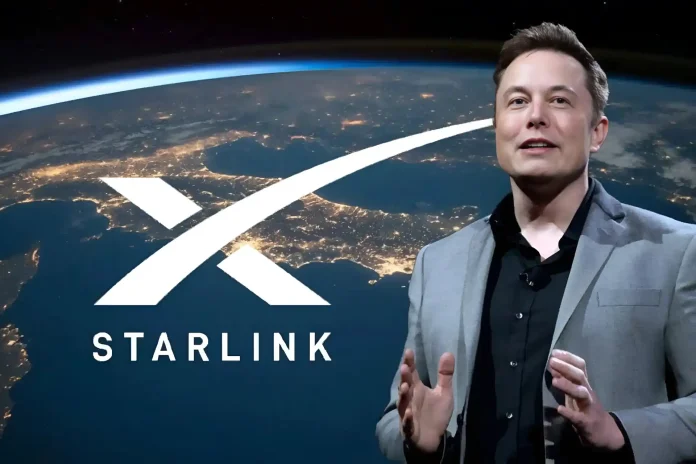In a groundbreaking move, Elon Musk’s Starlink gets registered in Pakistan, opening the doors to a revolutionary internet service that promises to transform the nation’s digital landscape. Being a broadband satellite connectivity service, Starlink has all the potential to bring low-latency internet services to almost every nook and cranny in Pakistan. This development, not only can solve the existing connectivity problems in Pakistan but could also open new opportunities in the field of education, healthcare, freelancing and e-commerce. For a nation which claims it is embracing the shift to become a digital country, Starlink in Pakistan is not simply a service but a bridge to that gap. Let’s learn how Starlink opens up enormous opportunities that can radically change the country’s future.
What Does Starlink Mean for Pakistan’s Digital Economy?
Connectivity issues have remained a constraint to Pakistan’s digital economy for years. While the country has made spectacular leaps in internet use, the actual physical infrastructure has stagnated, especially in rural and other remote regions. While Starlink gets registered in Pakistan, this issue could finally be overcome.
Starlink does not rely on existing broadband infrastructure, which is a great fit for geographically complex territories, such as the North of Pakistan or the desert. Business men and women in these areas will now be able to access the international market, freelancers are able to secure clients across the globe, and new businesses can offer services without the headache of connectivity problems.
Leading market analysts have estimated that Starlink could on its own introduce up to billions of dollars to the Pakistan economy by empowering people in the rural area who could contribute to the global digital economy. As a result of faster internet, many more internet businesses, e-commerce and financial technology services such as the internet banking services may be promoted thus enhancing the economic development of the country.
How Starlink Works: Simplified for the Everyday Use
Starlink’s technology may well seem like it is straight out of a science-fiction movie, but applying it is not complicated at all. Here’s a breakdown of how it works:
Satellite Network
Currently, SpaceX has a chain of several thousands LEO satellites interconnected and providing Earth coverage.
User Equipment
They have their customers supplied with dish antennas and Wi-Fi routers that connect to the satellites for internet purposes.
High-speed Data Transmission
Communication is done through the satellite network with no use of normal ground facilities.
Starlink’s Impact on Pakistan’s Tech Sector
With technology becoming one of Pakistan’s biggest economic strengths, the introduction of Starlink will further boost the industry’s progress.
Startups
These developments mean that startups will share work with international clients, attract overseas investments, and provide solutions to the world.
Freelancing
Freelancers in Pakistan – especially in such provinces as Quetta and Gilgit – will encounter increased connectivity to perform more projects and meet international deadlines.
Innovation
Increased connectivity is capable of triggering a series of disruption and innovation across many fields including artificial intelligence, robotics, and the Internet of Things or IoT.
What Does Starlink Registration in Pakistan Mean for Everyday Pakistanis?
Indeed the registration of Starlink is not the exclusive advancement of a modern technological solution; it serves as a lifeline to millions in Pakistan.
Entertainment without interruptions
Starlink’s high-speed internet implies that flood users will be able to stream and play without interruption, and to stay connected via social networks. Families can be entertained, informed and be connected regardless of the type of device they are using.
Empowered Rural Entrepreneurs
Small businesses in the rural areas could be able to copy from Amazon and Alibaba and sell their products worldwide, an option that increases the income level and therefore the standards of living among the people of the region.
Access to Global Knowledge
People who would have never been able to attend school before, or take professional courses, can now read international journals, take online courses, and watch webinars, thus receiving an education.
Empowering Freelancers and Startups
Freelance industry is already well-developed in Pakistan and the country belongs to the top five in terms of freelance work. However, what many freelancers experience is slow and intermittent connectivity which hampers them to work with global clients. That could change with the launch of Starlink in Pakistan, as it is with any other freelancer or independent professional, high-speed internet can be leveraged to work directly with clients, share bulky files and even engage in projects that demand high bandwidth connectivity.
The young innovative companies, more so, the start-ups, sourcing will also gain from efficient and faster internet connections as they will be able to expand their businesses and compete globally. Starlink’s arrival in Pakistan can also attract international investors who want to invest in this young talent market and improve the startup scene.
Pricing and Availability: What to Expect
Existing pricing strategies involve one-time hardware fee of $599 and a monthly charge of $110. As these costs might be a little steep for the average Pakistani, experts believe that Starlink will offer cheaper packages for emerging markets.
Potential options include:
- Government subsidies to reduce costs for the countryside clients.
- Promising payment options, including, installment regarding hardware.
- Account sharing where several households in the house use a single Starlink connection.
Challenges and Opportunities for Starlink in Pakistan
Starlink has now registered millions of customers, and while that is very compelling, the journey there is not without obstacles. The final stage is the implementation phase that has to be carefully planned together with the SpaceX company and the Pakistani government as well as local stakeholders.
Challenges
Affordability: The Starlink services provider is costing $599 for the dish and $110 per month for the subscription, which can be unaffordable for many Pakistanis.
Regulatory and Bureaucratic Hurdles: Executing its strategies in the context of the telecom regulations and policies of Pakistan might pose a halt in the rollout out of Starlink.
Local ISP Resistance: Old fashioned ISPs can see Starlink as a rival and may try to fight it.
Opportunities
Creating Affordable Packages: Working with the government to sponsor expenses for rural consumers might help Starlink to grow.
Improved Emergency Services: It can be used to give continuity in communication during Natural disasters, in Disaster management, and Disaster response.
Strengthening Global Perception: To allow Starlink to operate, Pakistan is opening its doors to embrace advanced innovative technologies and acquire more foreign investment.
Conclusion: Starlink’s Contribution to Pakistan’s Development
While Starlink gets registered in Pakistan, the country is on the top of a digital transformation. The prospects are infinite – better learning, healed bodies, boosted freelance workers, and a booming digital market. With a population that is as ready to embrace change and technology as this young nation has yet to properly employ, the arrival of Starlink in Pakistan comes right on the dot.
As Pakistan enters this new age of connection, it is not only the case of faster internet, but the case of breaks between individuals, communities, and between regions, as well as opportunities for cooperation, including in the provision of equal access to the digital world for everyone in the country.



